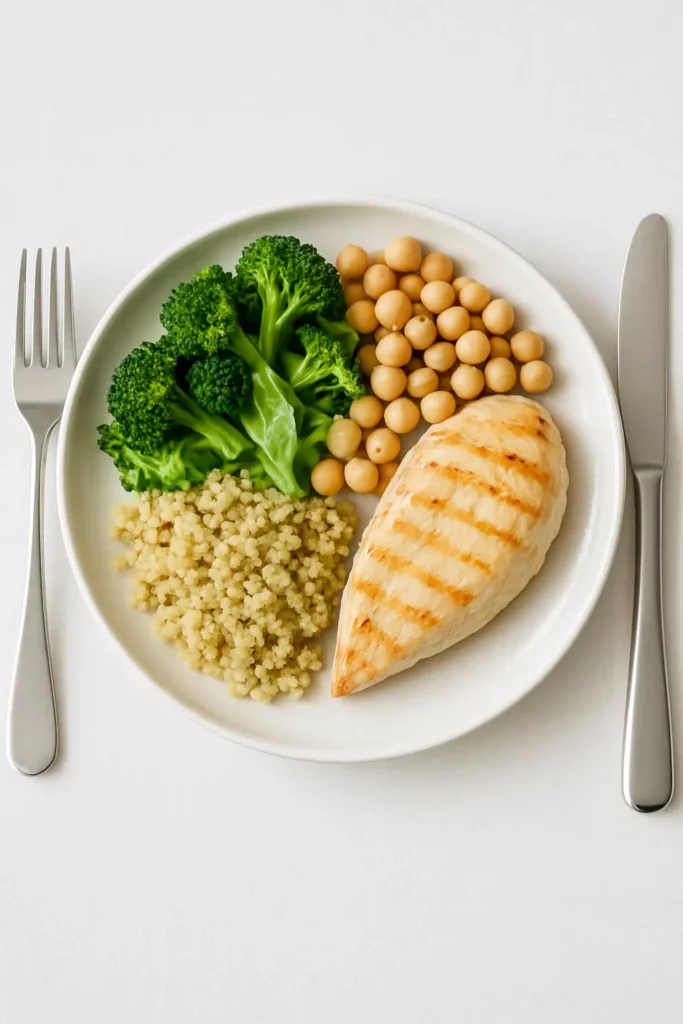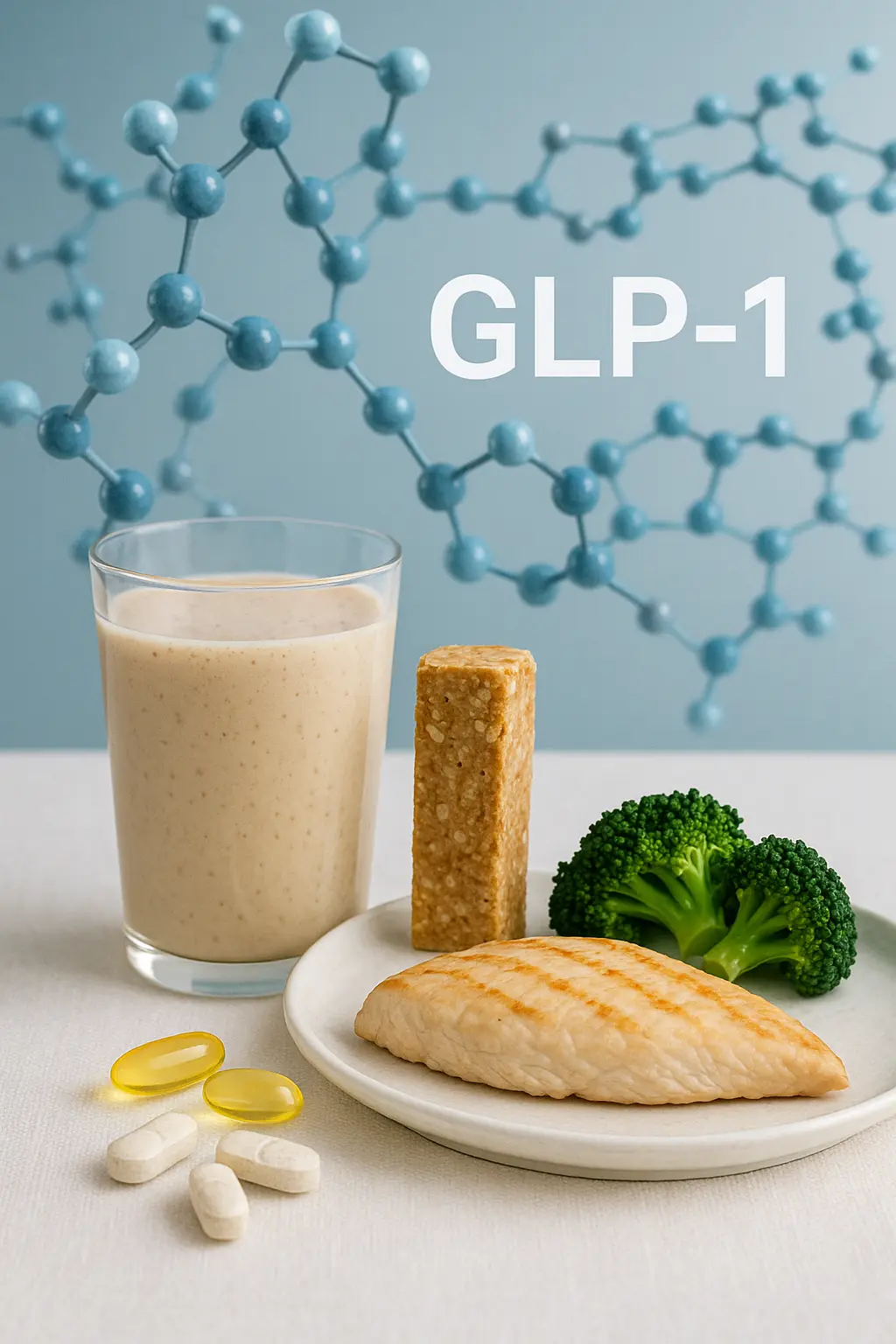

Appetite, glycemic profile and weight control are key goals of the modern approach to health.
One of the breakthroughs in this area is the hormone GLP-1 (glucagon-like peptide-1), which is being actively researched in both pharmacology and nutraceuticals.
Today we are witnessing a powerful multidisciplinary trend that combines innovations in medical drugs, dietary supplements and functional nutrition.

GLP-1: the game-changing hormone
GLP-1 is an incretin hormone synthesized in response to food and:
- stimulates insulin secretion,
- suppresses glucagon secretion,
- slows gastric emptying,
- decreases appetite.
In patients with obesity or insulin resistance, GLP-1 agonist drugs (semaglutide, liraglutide) demonstrate not only weight loss but also improvement of metabolic profile.
Reference:
- Drucker DJ. GLP-1 physiology and pharmacology. Cell Metab. 2018;27(4):740–756. doi:10.1016/j.cmet.2018.03.001

GLP-1 and altered eating behavior
According to CRN (Council for Responsible Nutrition), GLP-1 drugs affect not only appetite, but also behavioral aspects of eating: reduced cravings for fatty and sweet foods, smaller portions, better satiety control.
This creates new demands on the nutraceutical market: products to help adapt to new habits or to enhance the natural secretion of GLP-1.

Nutraceuticals in focus of GLP-1 trend
As demand for natural appetite support and glycemic control increases, more nutraceutical companies are turning their attention to ingredients that can activate or support GLP-1 secretion.
Studies show that certain food ingredients can influence this hormone both directly and indirectly – through improving insulin sensitivity, modifying the gut microbiota or delaying gastric emptying.
Table 1 Nutraceuticals with GLP-1 stimulation potential
| Ingredient | Mechanism of action | Example of a study |
|---|---|---|
| Berberine | Activation of AMPK, improving insulin sensitivity | Wang Y et al., 2019 |
| Inulin, prebiotics | Microbiota modulation → GLP-1 stimulus | Chambers ES et al., 2015 |
| Protein (including whey protein) | Stimulation of GLP-1 secretion of GLP-1 secretion | Nilsson M et al., 2004 |
| EGCG from green tea | Antioxidant action, effect on appetite | Rains TM et al., 2011 |
New product formats and food solutions
At Natural Products Expo West 2025 and SXSW 2025, leading functional food manufacturers (Nestlé, Daily Harvest, etc.) introduced companion products for GLP-1 medication users. Key features:
- increased protein and fiber content,
- lower glycemic index,
- small portions,
- energy and muscle mass support.
Table 2. examples of new products for support on GLP-1
| Product Category | Characteristics |
| Protein bars | ≥10 g protein, <5 g sugar, with prebiotics |
| Functional strips | B vitamins, fiber, probiotics |
| Chewable nutraceuticals | Encapsulated micronutrients, low calories |
Perspective and caution
Although GLP-1 agonists are effective, they have side effects: nausea, loss of muscle mass, and micronutrient deficiencies due to decreased appetite. This is why there is a growing demand for nutraceuticals that:
- support muscles (protein, creatine, BCAA),
- restore micronutrient balance (B12, D3, magnesium),
- improve digestion (enzymes, fiber).
Conclusion
GLP-1 is not just a hormone or a drug. It is a symbol of a new era in healthy living, where nutraceuticals, nutrition, emotional comfort and aesthetic aspects come together in one ecosystem.
In this context, dermatology also plays a role: improving the microbiota, reducing inflammation, and controlling weight all have an impact on the skin and psycho-emotional well-being of patients.
- Drucker DJ. Mechanisms of Action and Therapeutic Application of GLP-1. Cell Metab. 2018.
- Wang Y, et al. Berberine improves glucose metabolism. Metabolism. 2019.
- Chambers ES, et al. Prebiotic intake and GLP-1. Gut. 2015.
- Nilsson M, et al. Protein-rich meals and GLP-1 secretion. Am J Clin Nutr. 2004.
- Rains TM et al. Green tea catechins and weight management. J Am Coll Nutr. 2011.




